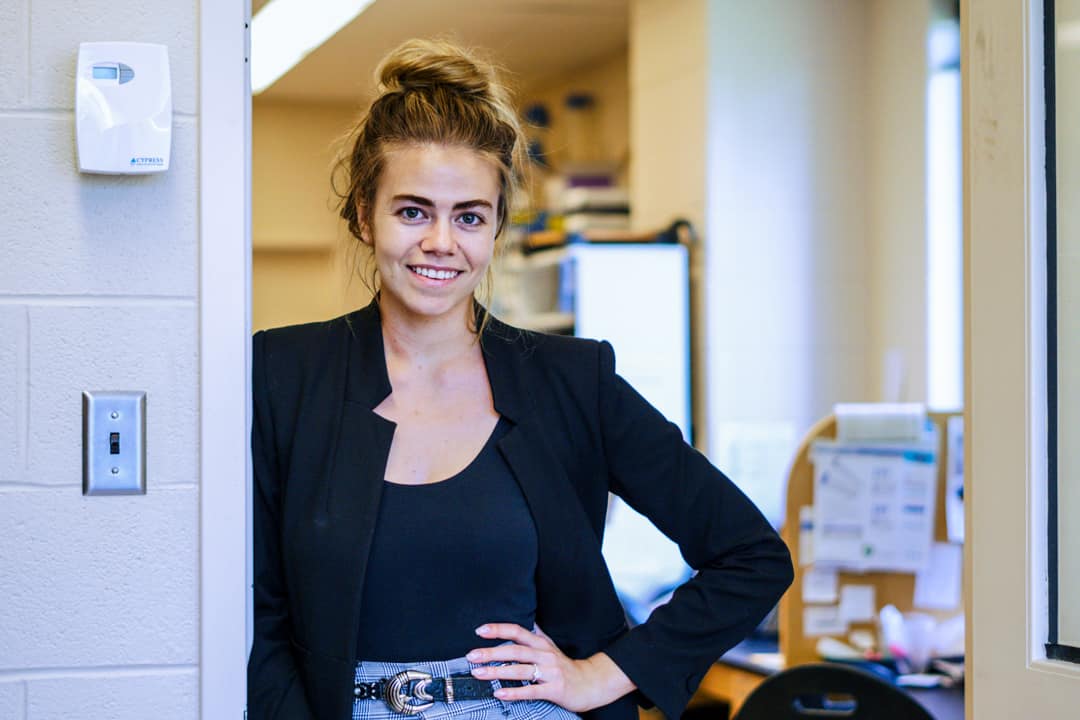Kath Intson is a PhD candidate at U of T’s Department of Pharmacology and a popular science communicator on Instagram, with the handle @weekday_neuroscientist. Her neuroscience research could lead to a better understanding of various neuropsychiatric disorders.
Intson’s doctoral research centres on neuropsychiatric disorders
The malfunction of a receptor for a neurotransmitter named glutamate has been linked to the development of neurological disorders, such as schizophrenia, autism, and Alzheimer’s disease.
Intson studies the effects of altering the ability of the glutamate receptor in mice, under the supervision of Professor Amy Ramsey. She specifically studies the NMDA receptor.
To function properly, the receptor requires a protein subunit called gluN1 to function, which is produced from the expression of the GRIN1 gene. By performing a technique called ‘gene knockdown,’ Intson can suppress the gene’s expression.
This suppression enables her to examine the effect of a malfunctioning gene on mice. The results of Intson’s research could help advance knowledge of human health, due to the similarities between the anatomy, physiology, and genetics of mice and humans.
Intson’s secondary project examines how environmental factors can influence organisms to develop characteristics associated with schizophrenia.
Paired together, these projects could enable Intson to better our understanding of schizophrenia, as the disorder is a result of both genetics and environmental factors.
Representation and science communication
Intson developed her Instagram account in response to snarky messages online from users skeptical that Intson is a PhD candidate.
In a social media post online, Intson explained that it’s normal for scientists to have a life outside of their research. “It doesn’t matter what I look like on Instagram,” she said to The Varsity, summarizing her post. “I can still be a scientist.”
The post garnered attention, which encouraged Intson to post more science-related content on her account.
With her Instagram account, Intson strives to represent a “voice in the diversity that is STEM.” The ability to communicate with her followers on Instagram is essential for this.
https://www.instagram.com/p/B16vYlAhBCd/?hl=en
“I think I just love chatting with people more than anything,” Intson said. “And if something that I post can spark a conversation, then that’s the whole goal of the account.”
According to Intson, Instagram science communicators are pushing the idea that there is no ‘one image’ of a scientist — something that Intson strongly supports.
“I think it’s true that literally every single person that I pass on the street could be a scientist,” said Intson. “I don’t conjure that one image.”
Representation to Intson means that leadership positions across professions are represented by people of races, genders, and orientations proportional to the diversity of individuals in these fields.
Role models and the experiences of women in STEM
Intson credits her women mentors for giving her confidence and “arming [her] with the tools that [she] needed to go forth and conquer.”
Understanding the career trajectories, challenges faced, and work put in by her mentors has been especially valuable for Intson.
“Just seeing somebody who’s in that position as a woman has been very helpful for me,” she said.


